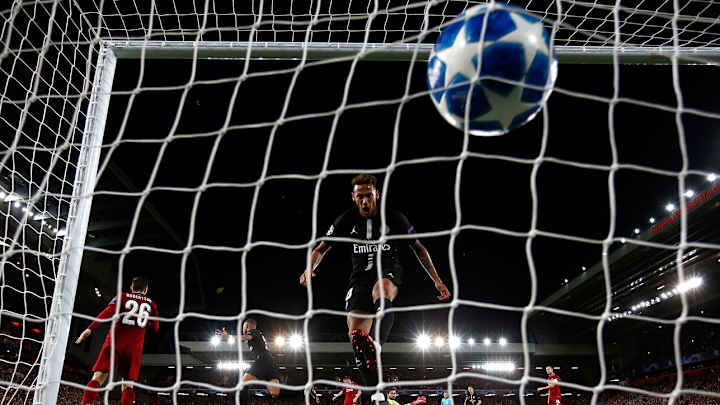Good Riddance: Why Abolishing the Away-Goal Rule is the Way to Go

Friday, perhaps, a great unfairness will be removed from at least some of the sport's premier competitions. There are no guarantees, and UEFA president Aleksander Ceferin was denying Thursday that it would happen, but there are indications that UEFA will vote to stop using the away-goals rule to settle two-legged ties that finish level on aggregate. If it does, it will mark the end of 55 years of an arbitrary rule that never made sense and never achieved what it set out to do, while repeatedly finishing ties prematurely.
There are countless examples of games being destroyed by the away goals rule. Take, for sake of choosing a high-profile example, the Champions League semifinal between Bayern Munich and Real Madrid in 2012. Bayern led 2-1 after the first leg. At the Bernabeu, Madrid attacked furiously from the start and scored twice in the opening 14 minutes. Bayern was then forced to attack and made it 3-3 on aggregate from a 27th-minute penalty–at which point, the game died. Bayern, as the away side, settled back to absorb pressure, and Madrid, terrified of conceding another away goal that would have meant it had to score twice, went into its shell. And so was laid bare the danger of a rule that means not all goals count equally.
"I believe the tactical weight of the away goal has become too important," Arsène Wenger said at a conference in 2008. "Teams get a 0-0 draw at home and they're happy. Instead of having a positive effect, it has been pushed too far tactically in the modern game. It has the opposite effect than it was supposed to have at the start. It favors defending well when you play at home."
WILSON: The Determining Factors for Eden Hazard's Big Decision
It was true then and remains so now. Or take the example of a team that goes away from home and, in difficult circumstances, defends brilliantly before, with 30 seconds remaining, conceding a sloppy goal. Why is that side better off than one that does exactly the same but makes its mistake 30 seconds into the second leg? Why does drawing 0-0 at home at 1-1 away take you through when drawing 1-1 at home and 0-0 away puts you out? It’s entirely irrational.
Ah, the apologists for the away-goals rule will say, but fewer goals are scored away, so you’re rewarding something that’s harder to do.
There are also fewer goals scored in the first half than the second: does anybody think we should decide drawn ties on first-half goals? (Which would, after all, encourage attacking play from the start.)
Abolish the away-goals rule, its defenders say, and away teams will simply look to shut games down.
To which the only possible response is to ask whether they have actually watched a game in the past decade. Nobody can defend anymore. In part that’s because of the structure inequalities within the game that have meant elite sides rarely have to bother defending in domestic competition, but it’s also due to a series of enlightened law changes. The evolution of the offside law and the increasingly robust stance taken against intimidatory behavior and tactical fouling have made it almost impossible simply to shut games down. The problem has been addressed by looking at its causes, rather than cosmetically addressing the symptom, which was all the away-goals rule ever did.
WILSON: What's Behind Neymar's Series of Poorly Timed Injuries?
The away-goals rule was first introduced by UEFA in the Cup Winners’ Cup in 1965, primarily to do away with the need for match replays, which were costly and difficult to arrange. Given the penalty shootout had not yet been invented and the only alternative was tossing a coin, it probably seemed the least of the available evils. And back then, it made a certain sense. At the time, away teams won only 16% of European matches–around half the figure today. Travel was gruelling, conditions far less homogenous and often hostile for the away side. Damage limitation became the obvious strategy. In the European Cup in 1964-65, for instance, three of the 30 ties featured a first-leg advantage of two goals or more being overturned in the second leg. Trying to persuade an away team that it was better to lose 3-1 than 2-0 was probably a justifiable aim.
It didn’t work. The away-goals rule was introduced over a three-year period in the European Cup, initially only for the early rounds, suggesting even those who first adopted the rule felt it was somehow a little disreputable. In the five seasons before the change, away teams averaged 1.20 goals per game in the European Cup; in the five seasons after, they averaged 1.05 goals.
The away-goals rule isn’t merely anachronistic and arbitrary. It doesn’t merely randomize and spoil football. It not only has no relevance to the modern game–it never worked in the first place. Let it go.
